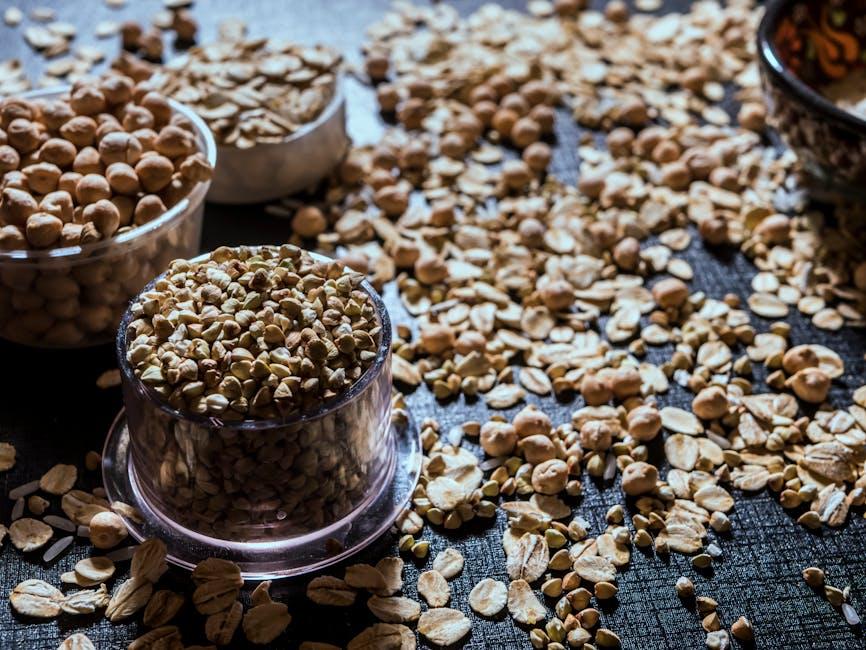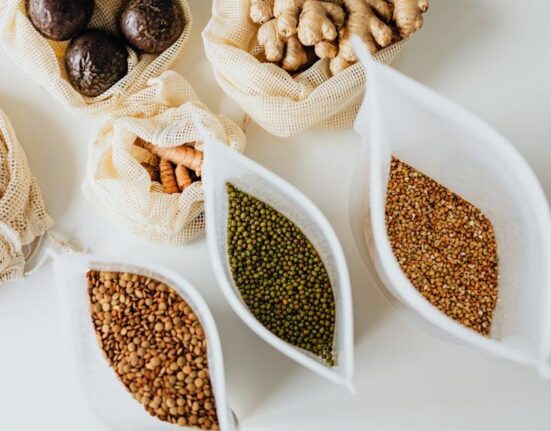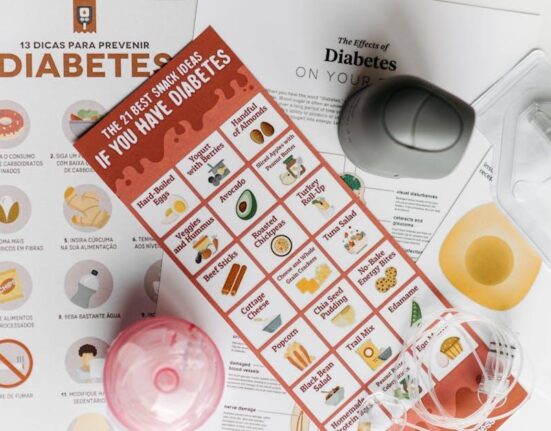Imagine your gut as a vibrant ecosystem, teeming with life and activity—a delicate balance of creatures and environments working harmoniously. When this balance is disrupted, discomfort and imbalance ripple through your body and mind. The GAPS (Gut and Psychology Syndrome) diet offers a roadmap to restoration, guiding your digestive landscape back to health. But how do you know when this subterranean world is truly healing? In this article, we’ll explore the subtle yet powerful signs that reveal your gut is on the mend, illuminating the path from turmoil to tranquility beneath the surface.
Table of Contents
- Recognizing Improved Digestion and Nutrient Absorption
- Noticing Changes in Bowel Movements and Gut Comfort
- Understanding Shifts in Energy and Mental Clarity
- Spotting Reduction in Inflammation and Food Sensitivities
- Embracing Gradual Reintroduction of Diverse Foods
- Q&A
- The Conclusion

Recognizing Improved Digestion and Nutrient Absorption
When your digestive system begins to bounce back on the GAPS diet, you might notice how food truly becomes fuel instead of a source of discomfort. This healing journey often reveals itself through a more regular and comfortable digestive rhythm—bloating diminishes, stools become predictable and formed, and heartburn or indigestion episodes fade away. These subtle shifts are your gut lining repairing itself, restoring the balance necessary for efficient enzyme production and better breakdown of nutrients.
Improved nutrient absorption translates into visible changes in your day-to-day vitality. As your gut lining heals, it can better absorb vitamins and minerals, leading to enhanced energy levels and smoother skin texture. Common signs include:
- Reduced cravings for sugary or processed foods
- Consistent energy throughout the day
- Clearer cognitive function and fewer mood swings
- Healthier hair and nail growth
| Symptom | Before GAPS | After Gut Healing |
|---|---|---|
| Bloating | Frequent and uncomfortable | Rare or absent |
| Stool consistency | Irregular and loose | Formed and regular |
| Energy | Up and down | Steady and sustained |

Noticing Changes in Bowel Movements and Gut Comfort
One of the clearest indicators that your digestive system is responding positively to the GAPS protocol is a shift in your bowel habits. You might notice more regular and softer stools, signaling improved nutrient absorption and gut lining repair. It’s common for these changes to manifest gradually, often accompanied by a decrease in bloating and abdominal discomfort. Pay attention to how your body feels post-meal; a calmer, less gurgling gut is a subtle but important sign that healing is underway.
However, don’t be surprised if occasional fluctuations occur—gut restoration is a dynamic process. Sometimes, temporary shifts like mild cravings or slight gas are just your microbiome recalibrating. Here’s what to look out for:
- Consistent stool formation without urgency or pain
- Reduction in bloating and gurgling sounds
- Less frequent constipation or diarrhea episodes
- Improved overall gut comfort after meals
| Symptom | Healing Sign | What It Indicates |
|---|---|---|
| Soft, formed stool | ✔ | Healthy digestion & absorption |
| Reduced bloating | ✔ | Less inflammation, balanced flora |
| Stable gut sounds | ✔ | Improved motility and gut function |

Understanding Shifts in Energy and Mental Clarity
When your gut begins its healing journey on the GAPS protocol, one of the most noticeable transformations is in your energy levels and mental clarity. No longer weighed down by the internal chaos of inflammation and imbalance, many people find themselves waking up feeling refreshed, energized, and ready to tackle the day without relying on caffeine or quick fixes. This surge in vitality is a direct reflection of a gut that’s balancing its microbial environment and optimizing nutrient absorption, fueling your body more efficiently than ever before.
Accompanying this renewed energy is often a remarkable improvement in focus and cognitive function. Brain fog starts to lift, and with it comes sharper memory, quicker thinking, and an uplifted mood. You might notice:
- Improved concentration during tasks that once felt overwhelming
- Reduced mental fatigue, helping you breeze through the workday
- Greater emotional stability and less irritability
These subtle yet profound changes signal that your gut-brain axis is re-establishing harmony, underscoring the deep connection between digestion and mental wellness.

Spotting Reduction in Inflammation and Food Sensitivities
When your gut begins to recover, you’ll often notice a subtle yet powerful decline in chronic inflammation. This can manifest as a reduction in bloating, tenderness, and digestive discomfort. More than just physical relief, you may also observe an overall calming of autoimmune flare-ups or skin irritations that once felt relentless. Your body’s inflammatory response starts to normalize, paving the way for improved energy levels and a more balanced immune system.
Simultaneously, foods that previously caused distress—be it bloating, headaches, or mood fluctuations—lose their grip on your system. You might find yourself able to reintroduce certain vegetables, nuts, or fermented foods without triggering sensitivity symptoms. This evolving tolerance is a core indicator that your gut’s lining is strengthening and your microbiome is regaining harmony. Keep an eye out for changes such as:
- Reduced bloating and gas after meals
- Less skin redness or inflammation
- Improved digestion without discomfort
- Fewer allergic-type reactions or food cravings

Embracing Gradual Reintroduction of Diverse Foods
As your gut begins to regenerate and restore its natural balance, you’ll notice a newfound ability to accommodate a broader variety of foods. This phase is marked by a gentle yet exciting expansion of your dietary palette, often reintroducing fruits, fermented vegetables, and well-cooked grains back into your meals. Listen closely to your body’s subtle cues—improved digestion, reduced bloating, and steady energy levels signal that your gut lining’s resilience is strengthening, making space for more diverse nourishment. Remember, patience is key; this reintroduction should be gradual and mindful, allowing your gut microbes to adapt harmoniously.
To support this delicate transition, focus on incorporating foods that are rich in prebiotics and natural enzymes, which further encourage microbial diversity and intestinal healing. Be on the lookout for positive signs such as:
- Consistent bowel movements, indicating balanced gut motility
- Decreased food sensitivities or reactions
- Enhanced nutrient absorption, reflected in improved vitality
Structured experimentation can assist here, carefully charting each food’s impact to tailor the best personalized gut-healing strategy moving forward.
Q&A
Q: What are some early signs that my gut is starting to heal on the GAPS diet?
A: Early signs often include a reduction in bloating, less stomach discomfort, and more regular bowel movements. You might notice your energy levels are more stable, and food cravings begin to lessen as your digestive system balances.
Q: How can I tell if inflammation in my gut is decreasing?
A: Decreasing inflammation often shows up as fewer episodes of abdominal pain, less sensitivity to certain foods, and an overall calmer digestive tract. Skin issues like eczema or rashes linked to gut health may also start to improve.
Q: Is improved digestion a reliable indicator of gut healing on GAPS?
A: Yes. As your gut lining repairs, you’ll likely find you digest food more efficiently with less gas, reflux, or diarrhea. Enhanced digestion means your body is better absorbing nutrients, which supports overall wellness.
Q: What changes in mood or mental clarity might I expect as my gut heals?
A: The gut-brain connection means healing your gut can positively affect your mental state. You may experience reduced brain fog, improved mood, and less anxiety or irritability as your microbial balance improves.
Q: How long does it typically take to see signs of healing on the GAPS diet?
A: Healing time varies widely depending on the individual and the severity of gut issues. Some notice shifts within a few weeks, while deeper healing can take several months. Patience and consistency with the GAPS protocol are key.
Q: Can I rely on just physical symptoms to know if my gut is healing?
A: Physical symptoms are important clues but not the whole story. Monitoring changes in digestion, energy, and mood alongside professional guidance gives a clearer picture of your gut’s healing progress.
Q: What should I do if symptoms worsen during the early stages of GAPS?
A: Temporary flare-ups can occur as your gut rebalances, but if symptoms significantly worsen or persist, it’s wise to consult a healthcare professional. Adjusting the diet or supplementation may be necessary to support optimal healing.
Q: Why is it important to listen to my body throughout the gut healing process?
A: Your body communicates its needs and progress through various signals. Paying attention to these helps tailor your GAPS journey to what works best for you, ensuring a more effective and supportive healing experience.
The Conclusion
As you journey through the GAPS protocol, tuning into your body’s subtle signals becomes both an art and a science. Recognizing the signs that your gut is healing isn’t just about marking milestones—it’s about celebrating the quiet victories within, where resilience is rebuilt and balance restored. With patience and mindful attention, these indicators serve as beacons of progress, guiding you toward a healthier, more vibrant self. Embrace the process, honor your body’s wisdom, and trust that with each thoughtful step, a stronger gut—and a stronger you—is emerging.














Leave feedback about this